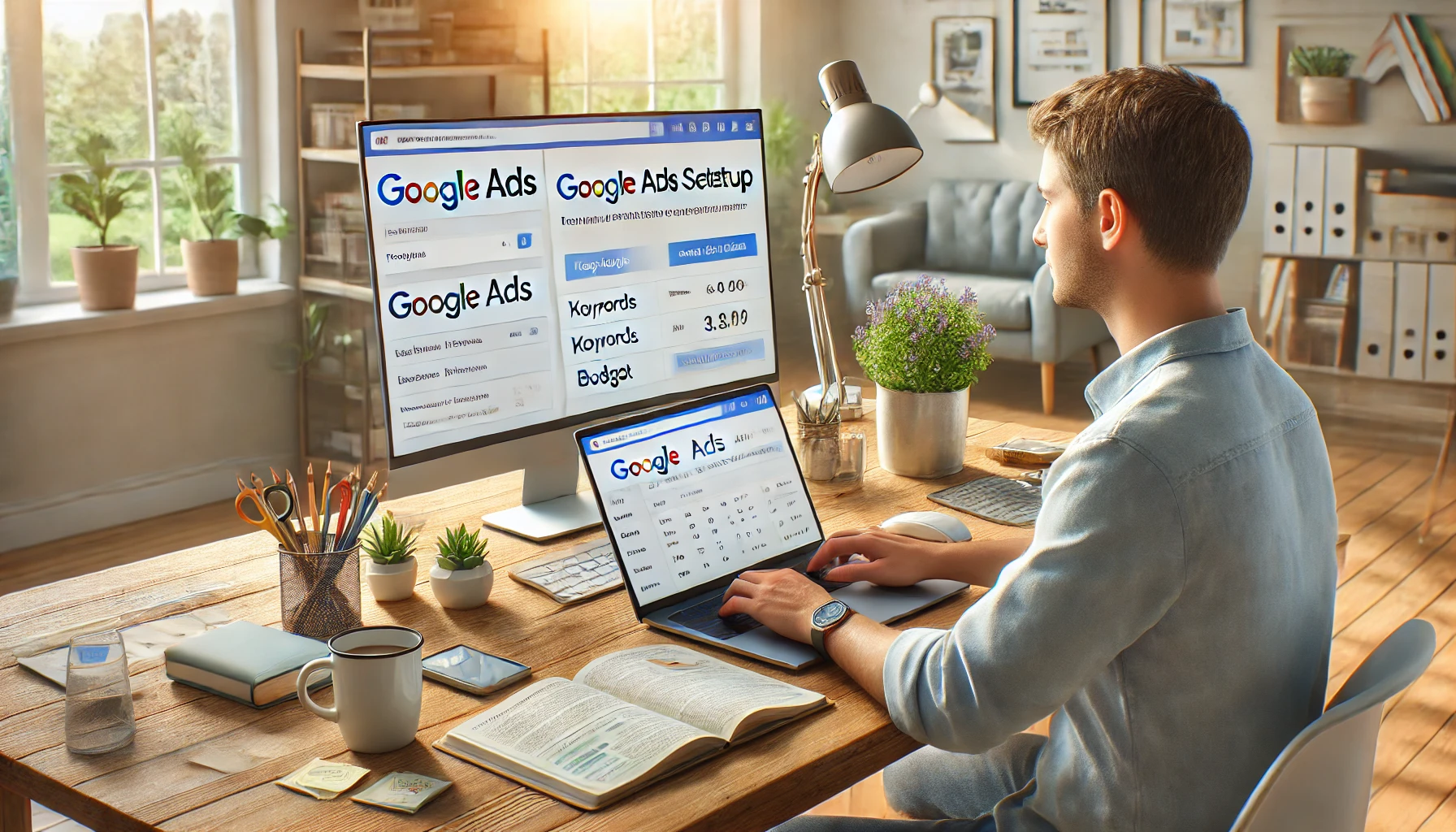While Facebook Ads dominates the social space, Google Ads rules the world of search. It’s one of the most powerful platforms for businesses that want to capture demand—people actively searching for a solution.
In this guide, we’ll walk you through the basics of Google Ads so you can start running your first campaigns with confidence.
What Is Google Ads?
Google Ads is Google’s advertising platform that lets businesses show ads on:
- Google Search
- YouTube
- Display Network (sites, apps, Gmail)
- Google Maps
It’s especially powerful for showing ads to people who are already looking for what you offer.
Step 1: Choose the Right Campaign Type
Google Ads has multiple types of campaigns. As a beginner, focus on:
- Search Campaigns: Ads appear on Google search results
- Display Campaigns: Visual ads appear on partner websites
- Video Campaigns: Promote videos on YouTube
Start with Search Campaigns—they’re direct and effective.
Step 2: Keyword Research
This is where Google Ads really shines.
Tools to use:
- Google Keyword Planner
- Ubersuggest
- AnswerThePublic
Look for keywords with:
- High search volume
- Low to medium competition
- Buyer intent (e.g., “buy sneakers online” vs. “what are sneakers”)
Group your keywords by theme to keep campaigns organized.
Step 3: Create Your Google Ads Account
- Go to ads.google.com
- Choose “Expert Mode” (gives full control)
- Set up billing and account preferences
- Create your first campaign
Use a Gmail account tied to your business for better organization.
Step 4: Write Compelling Ads
Google Ads Search campaigns use text ads. Each ad includes:
- Headline 1: Grab attention (30 characters)
- Headline 2: Add value or benefit
- Description: Expand on your offer (90 characters)
- URL path: Clean and relevant
Example:
Headline 1: Get Custom T-Shirts
Headline 2: Fast Shipping, Great Prices
Description: Order online today. Free design preview.
Step 5: Set Your Budget and Bids
As a beginner:
- Start with $5–$10/day
- Use Maximize Clicks or Maximize Conversions bid strategies
- Let Google’s algorithm optimize your delivery
Monitor your Cost Per Click (CPC) and adjust keywords or ads accordingly.
Step 6: Add Extensions
Ad extensions improve visibility and CTR. Use:
- Sitelink Extensions (extra links)
- Call Extensions (phone number)
- Location Extensions
- Callout Extensions (highlight benefits)
They make your ad look bigger and more trustworthy.
Step 7: Install Google Tag & Conversion Tracking
Use Google Tag Manager to add the tracking code to your site.
Then, set up conversion goals (form submissions, purchases, calls) in Google Ads or Google Analytics.
Tracking allows you to measure what really matters.
Step 8: Monitor & Optimize
Keep an eye on:
- CTR: Aim for above 3% for search campaigns
- CPC: Lower is better—watch for expensive keywords
- Conversions: Adjust copy, landing pages, or keywords to improve
Pause keywords that don’t convert. Boost ones that do.
Final Thoughts: Google Ads Is About Precision
Unlike social media ads that create interest, Google Ads captures intent. That makes it incredibly powerful—but also unforgiving if you target the wrong keywords or write weak copy.
Start small, stay organized, and be patient. Once you get the hang of it, Google Ads can become one of your most consistent sources of high-quality traffic.
